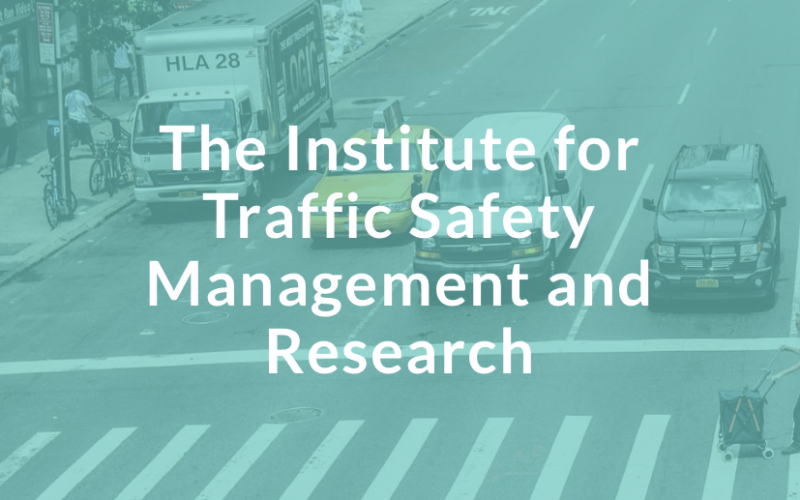Director Debra Rood Retires From ITSMR, Jerry Miller To Take The Wheel



After four decades at the Institute for Traffic Safety Management and Research (ITSMR), a research center within the University at Albany’s Rockefeller College of Public Affairs and Policy, ITSMR Director Debra Rood has decided to change lanes and take the exit to retirement. Effective July 1st, Gerard “Jerry” Miller will take the wheel, replacing Debra who has been in the driver’s seat for nearly 22 years.
Since it was established in 1978 at the request of the NYS Department of Motor Vehicles and Governor’s Traffic Safety Committee, ITSMR has been a leading university-based research center that strives to enhance efforts by local, state and national agencies to reduce motor vehicle crashes, fatalities and injuries and improve the safety of all roadway users. ITSMR’s studies focus on major programs and legislation in a wide range of highway safety areas, including alcohol and drug impaired driving, motorcycle safety, occupant protection, commercial vehicle safety, pedestrian safety, and distracted driving.
“In my over 40-year career, I am most proud of establishing a national reputation for ITSMR and receiving recognition as a premier university-state partnership for the promotion of highway safety,” said Debra. “We’ve been able to accomplish this by anticipating, adapting and seizing on opportunities — not hesitating to raise our hand — all resulting in the perpetuation of ITSMR’s “can-do” culture and persona. We have built and sustained an organization dedicated to the goal of improving highway safety and I am pleased to be leaving the Institute in a strong position to pursue new opportunities and avenues to support efforts to save lives on the nation’s roadways.”
Debra Rood, a 1978 Rockefeller MPA alumna, first joined the Institute staff in 1980 as a research associate, became deputy director in 1990, and was appointed to the position of director in 1999. Throughout her tenure, she gained the reputation as an expert and leader in the field.
With New York serving as a national leader in highway safety, Debra and ITSMR have played historic roles in conducting evaluations of major traffic safety legislation passed in New York State, including the STOP-DWI program (1981); the nation’s first mandatory seat belt law (1984); and the nation’s first law banning hand-held cell phone use while driving (2001).
She and the Institute’s team have served on national expert panels, presented at prominent conferences, and contributed to numerous studies of legislative initiatives. Debra even had the unforgettable opportunities to travel to China as a member of a women transportation leaders delegation, to St. Croix in the U.S. Virgin Islands to conduct training for the V.I. Highway Safety Office, and to Anchorage, Alaska to the Governor’s Highway Safety Association’s annual meeting.
Understandably, progressions in technology have been ITSMR’s greatest changes since its beginnings. “Over the years, technology advancements have played a key role in the Institute’s work, both in the day-to-day operations and the research endeavors of the University and ITSMR,” reflected Debra. “In order to position ITSMR to participate in a wider range of projects, a strong technical team of developers and IT staff with expertise in systems architecture and network security has been built over the past few years.”
The Institute has made substantial investments in hardware and software, while the University’s IT Data Center has also significantly enhanced ITSMR’s technical resources and capabilities. With this expansion, ITSMR has been able to launch initiatives including the Traffic Safety Statistical Repository (TSSR), an online system developed and maintained by ITSMR that makes motor vehicle crash and ticket data available to the public, as well as the Drug Recognition Expert Data Collection and Management System (DRE), a web and tablet application used currently by New York and 12 other states to collect data from the evaluations of drivers suspected of drug-impaired driving.
Under the guidance of Jerry Miller, ITSMR will continue to adapt as new traffic safety issues emerge and sponsor priorities shift. “I am confident that Jerry will continue to pursue opportunities that build on the ITSMR’s expertise, technical capabilities and other strengths; further enhance ITSMR’s visibility and prospects for future opportunities; and ultimately contribute to the identification of solutions that will reduce motor vehicle crashes, fatalities and injuries,” said Debra.
Jerry first joined ITSMR’s staff in 2016 as a project director and has been instrumental in expanding the Institute’s capabilities in the area of drugs and driving. Prior to ITSMR, Jerry worked for the State of New York for 15 years in various capacities, including serving as a program representative for the Governor’s Traffic Safety Committee where he also held the position of state coordinator for New York’s DRE program. He began his professional career as a police officer in 1993 in Pittsfield, Mass., and like his predecessor, Jerry also earned a Master of Public Administration from Rockefeller College.
“Jerry’s expertise and that of other staff, coupled with ITSMR’s unique access to toxicology data collected from drivers arrested for drugged driving, provide opportunities to conduct research studies that will expand current knowledge regarding the involvement of drugs in driving,” Debra added. “This research will also provide the opportunity to contribute to the national conversation about the impact of the legalization of marijuana on traffic safety in New York and other states.”
With the recent legalization of recreational marijuana in New York State, there have been intensified concerns about the impact of drug-impaired driving on traffic safety and increased the demands for data on cannabis use and driving. ITSMR has been identified as an important source of data related to drug impaired driving and is expected to serve an expanded role in supporting the state’s efforts to assess the impact of the new legislation on traffic safety.
As for Debra, she is looking forward to her next chapter. “I’m not sure what’s next but I’m looking forward to seeing what retirement looks like once COVID is finally in the rearview mirror.”
“I have been extremely fortunate to work with outstanding colleagues throughout my career at ITSMR — these include members of New York’s traffic safety community at the state and local level who are dedicated to the shared goal of making our roads safer for all,” said Debra. “I am very grateful for all the support received from my colleagues and friends at the Research Foundation and the University. I have also worked with a number of Deans over the years, from Frank Thompson to Karl Rethemeyer, and have benefited from the advice and appreciated the support received from each of them.”
“My deepest appreciation of all goes to the ITSMR staff, especially Anne Dowling who recently retired after dedicating 37 years of her career to ITSMR and deserves equal recognition for its success,” said Debra. “I could never have had a more talented and dedicated group of colleagues and friends to work with over my career.”


